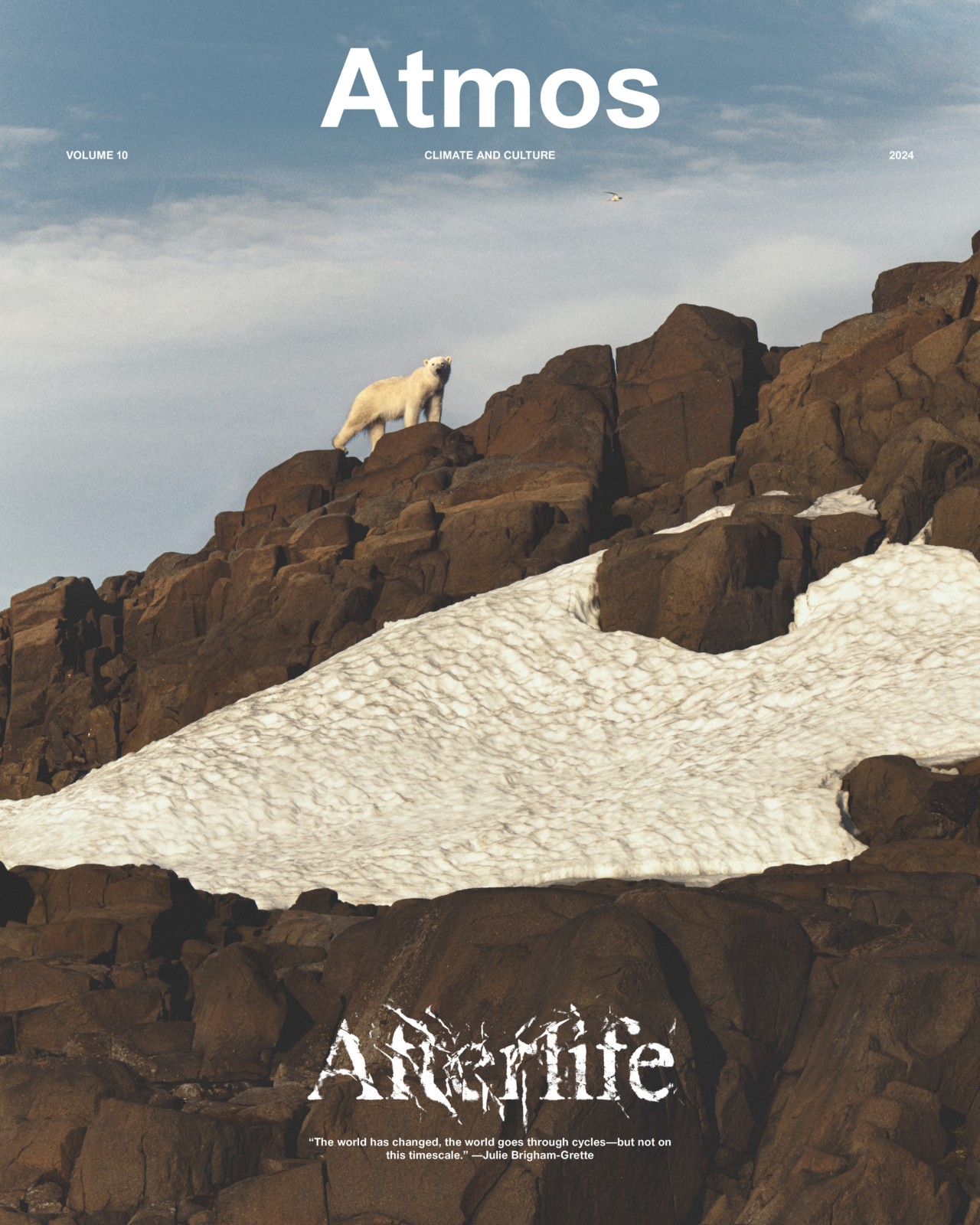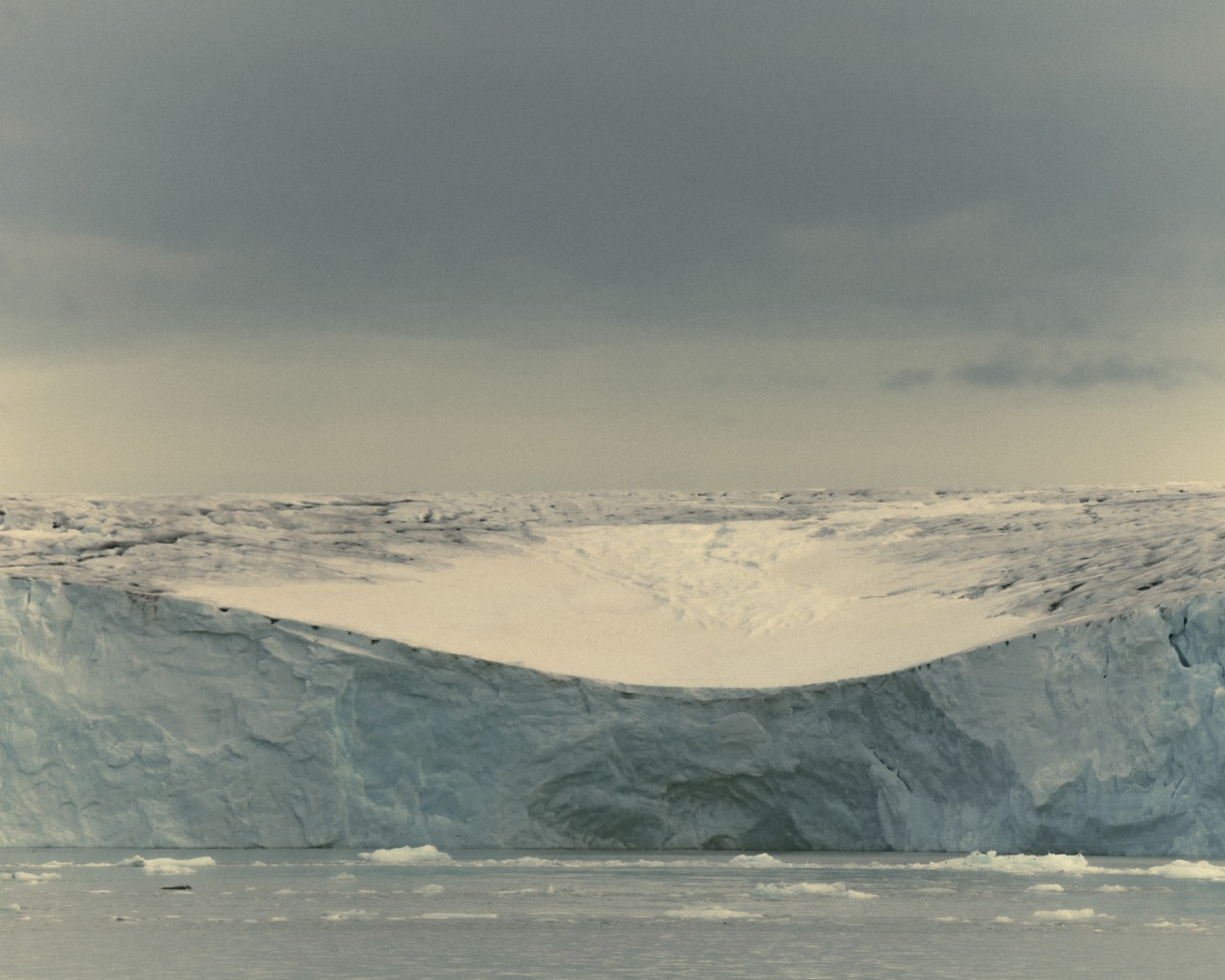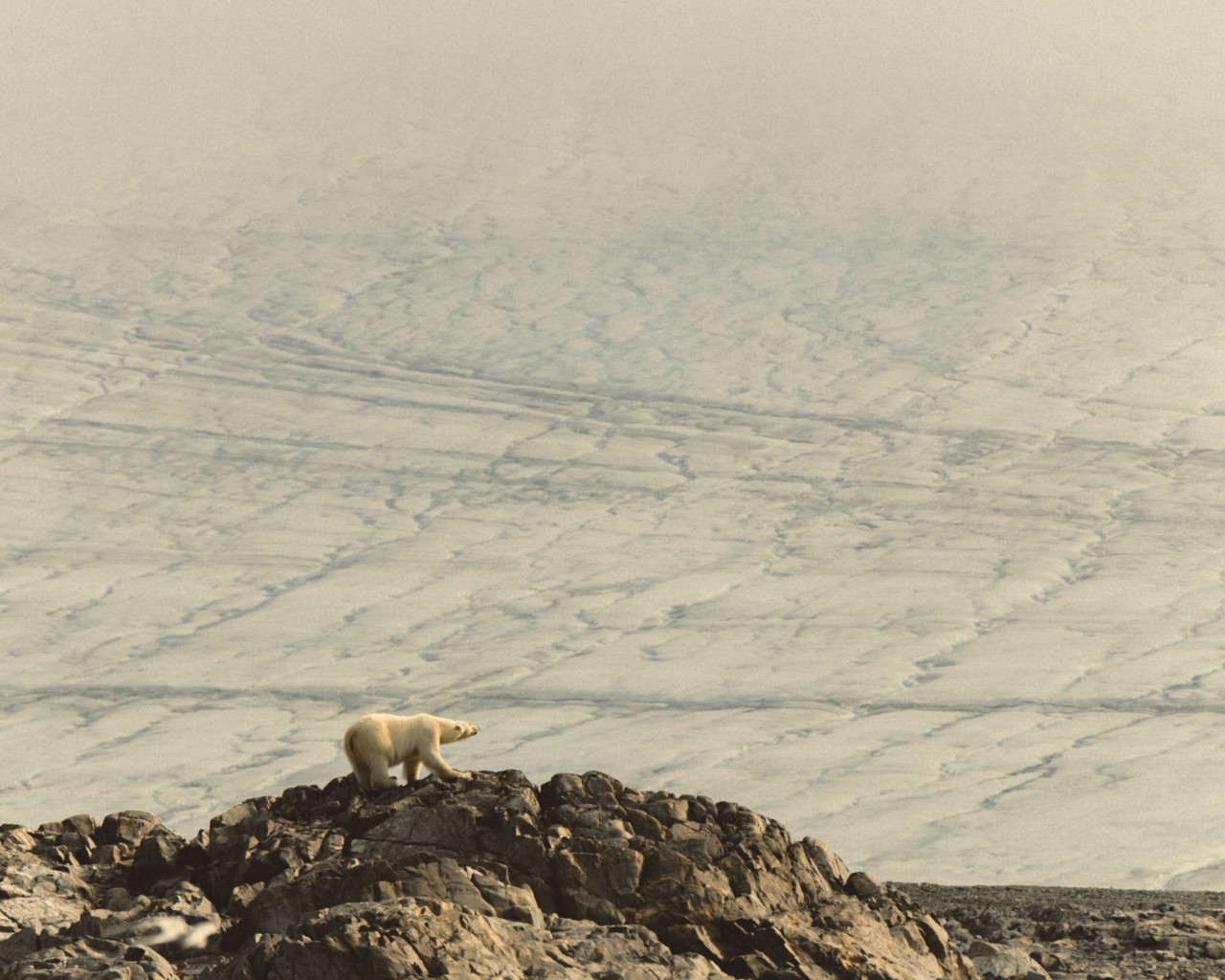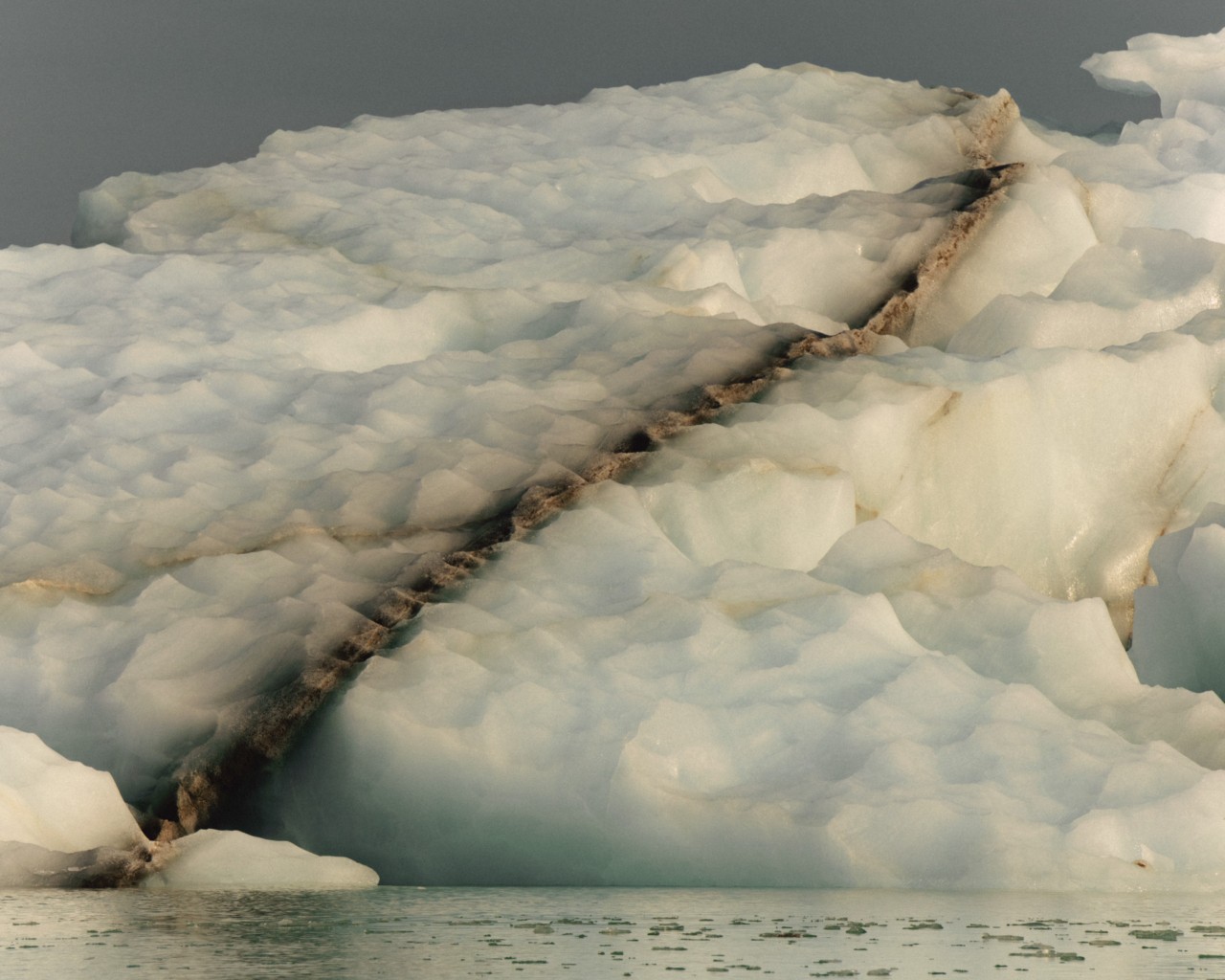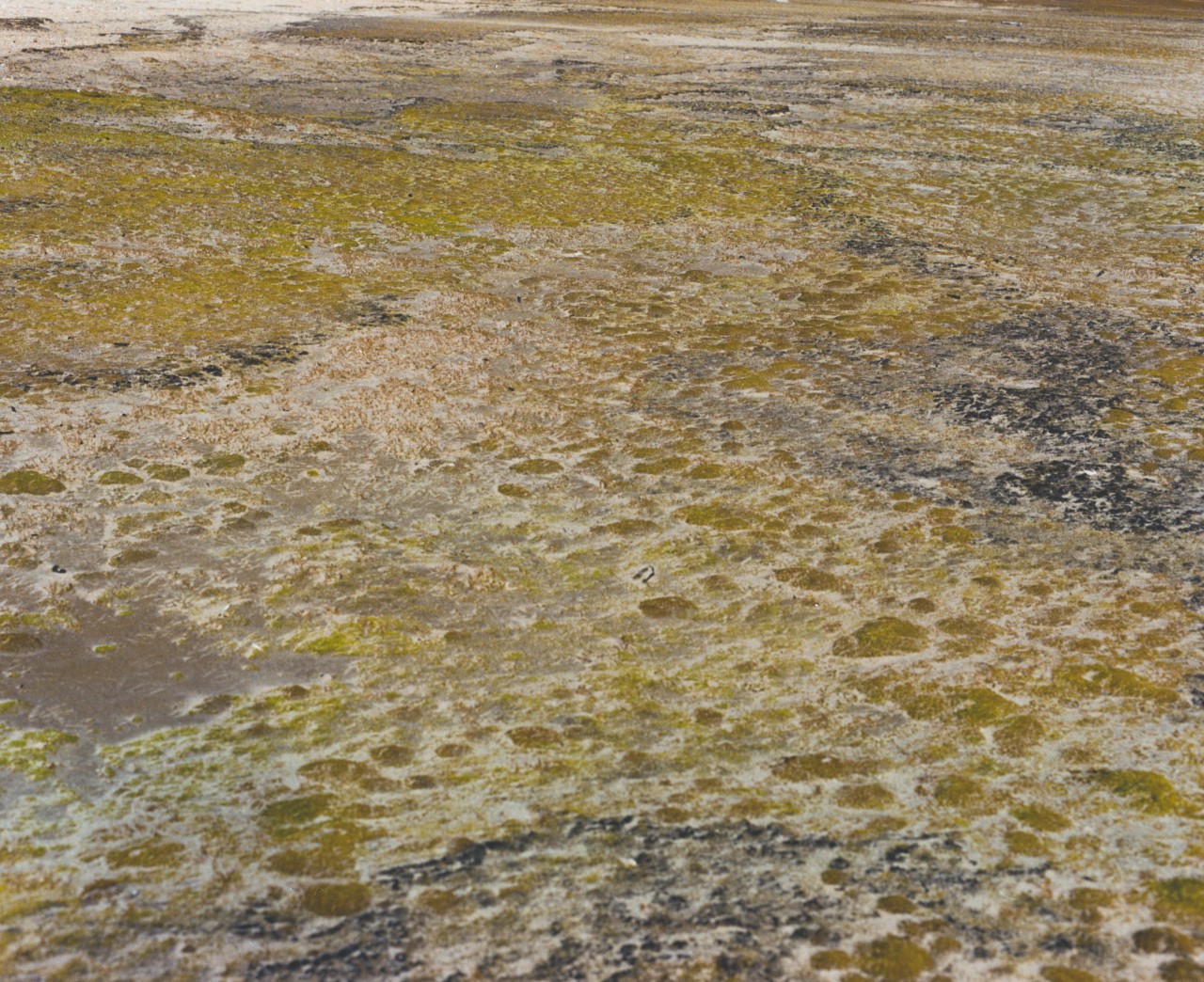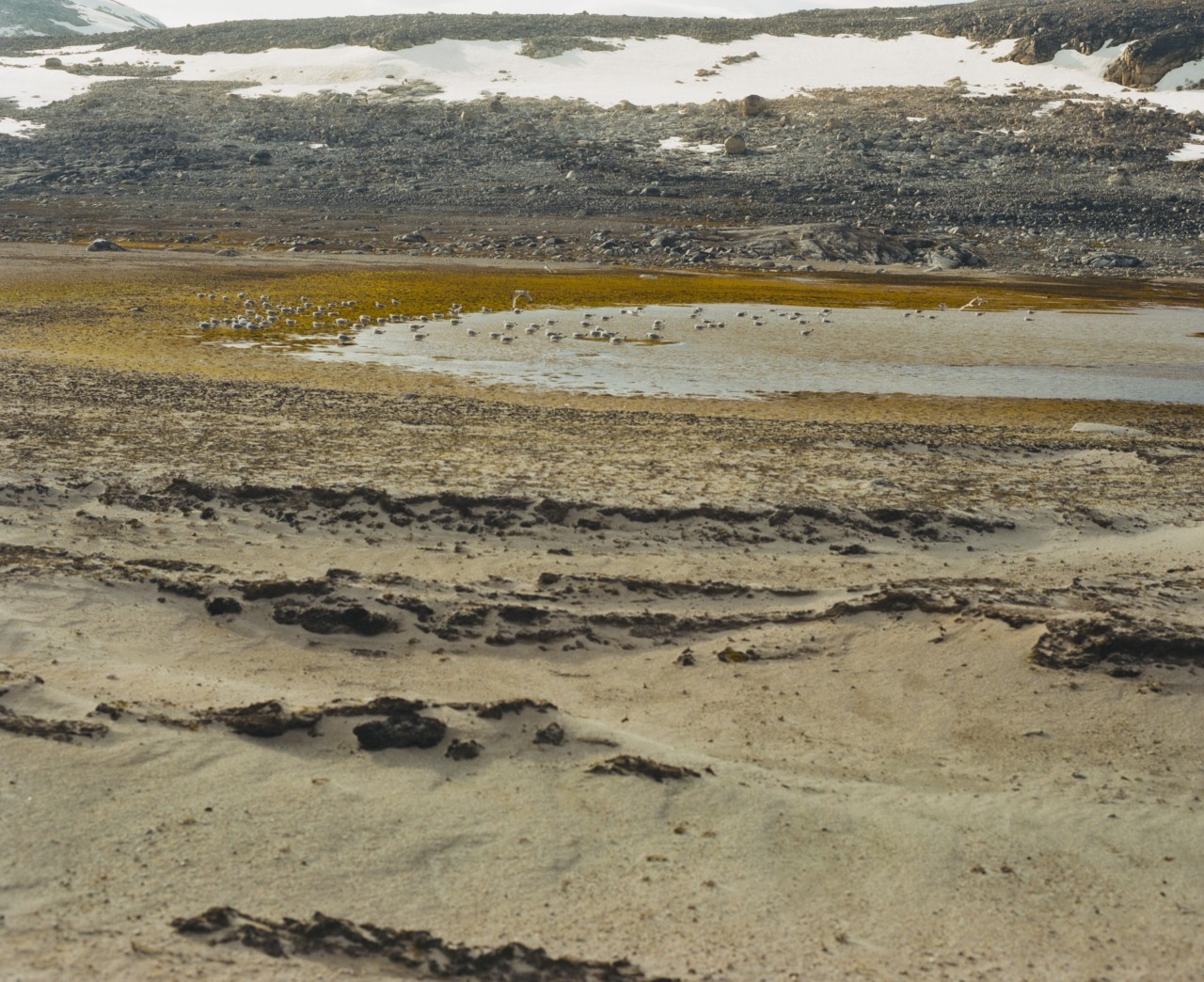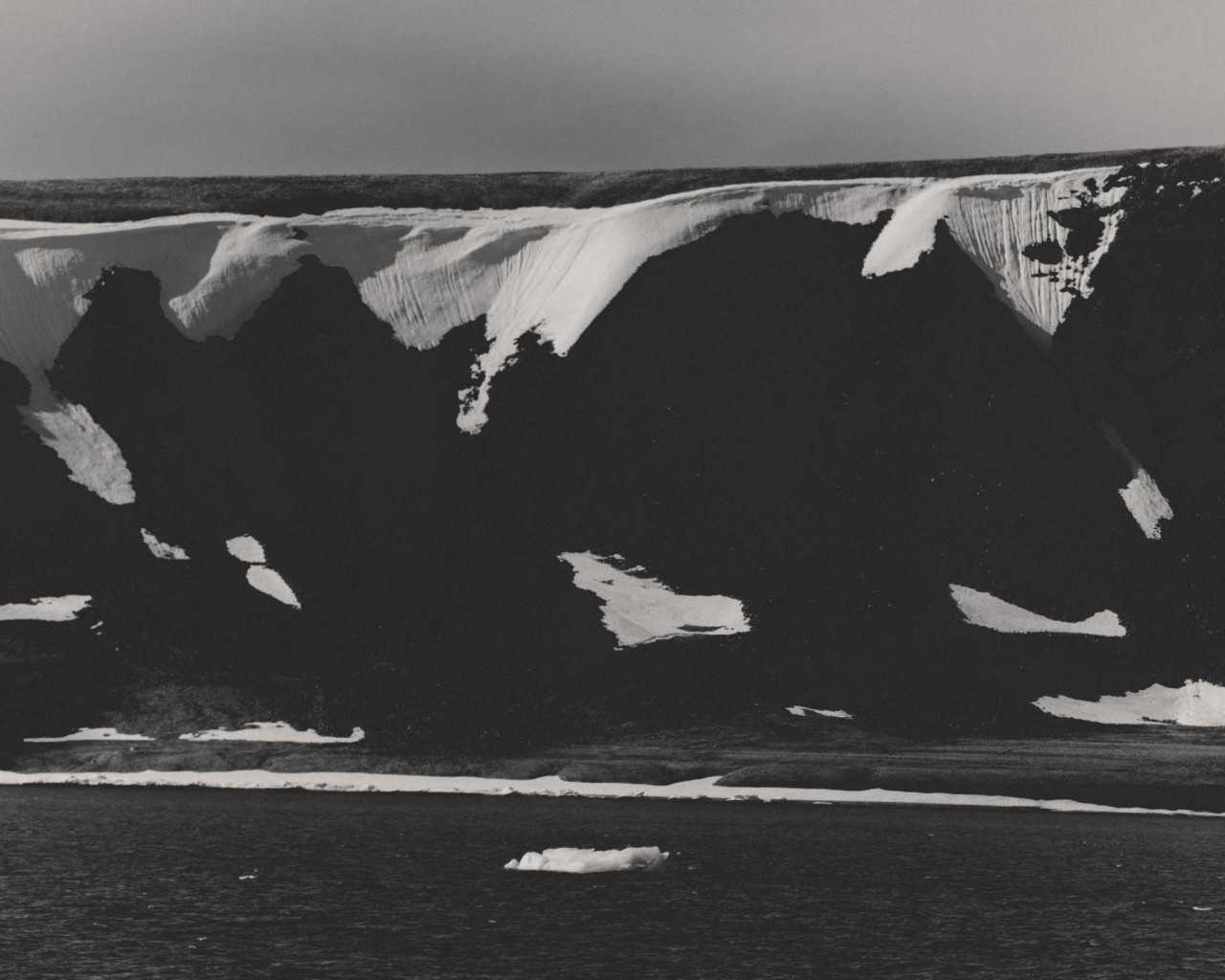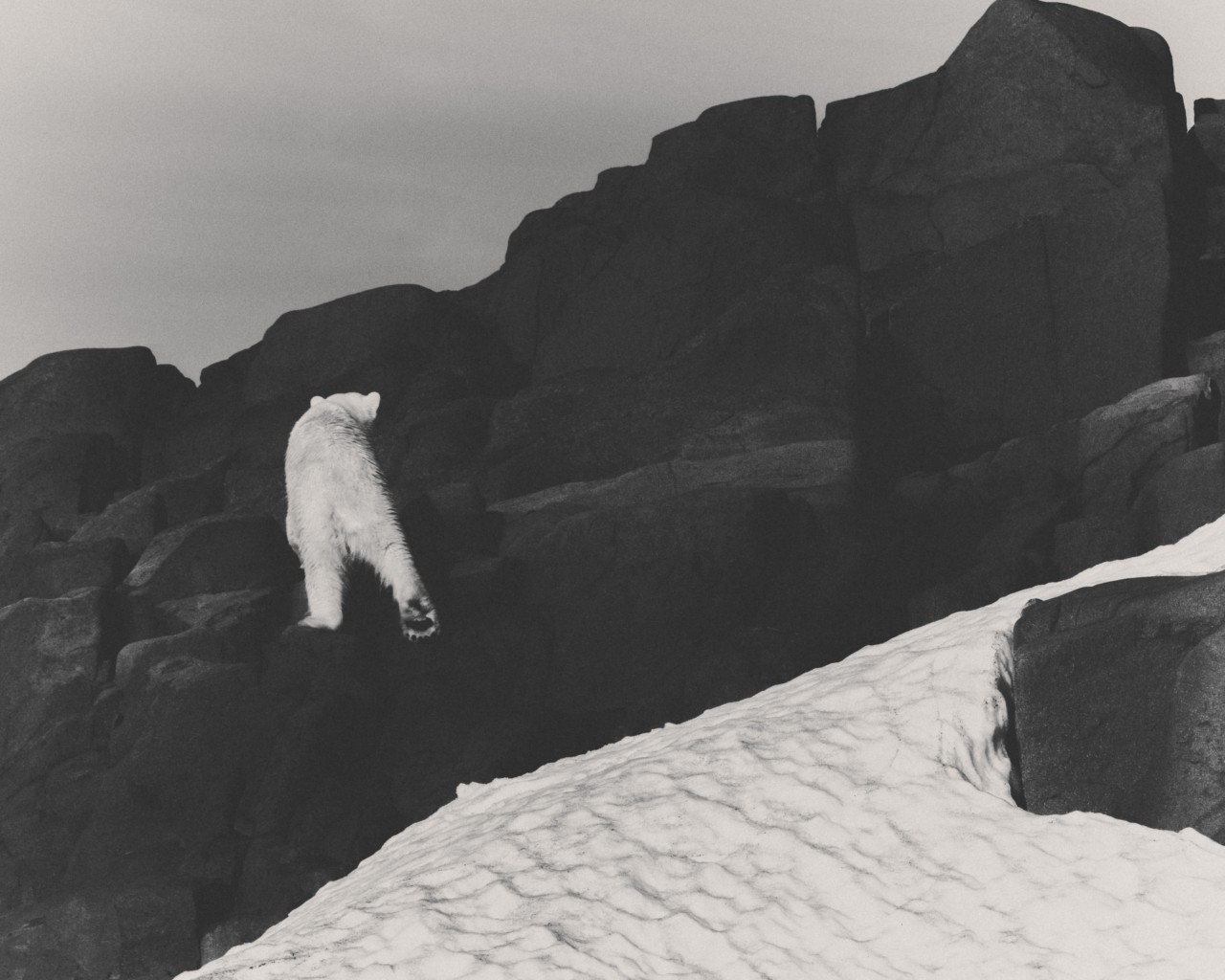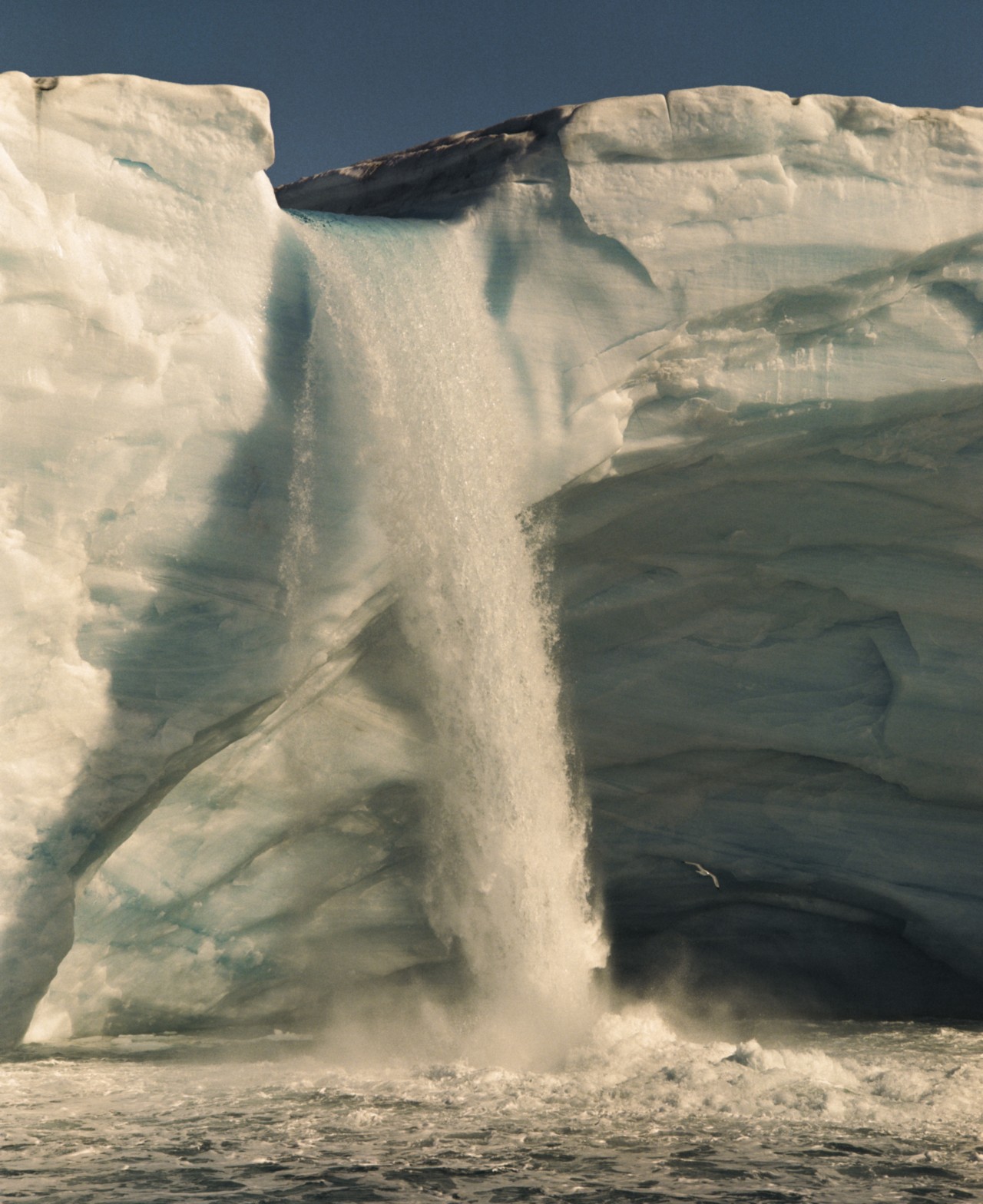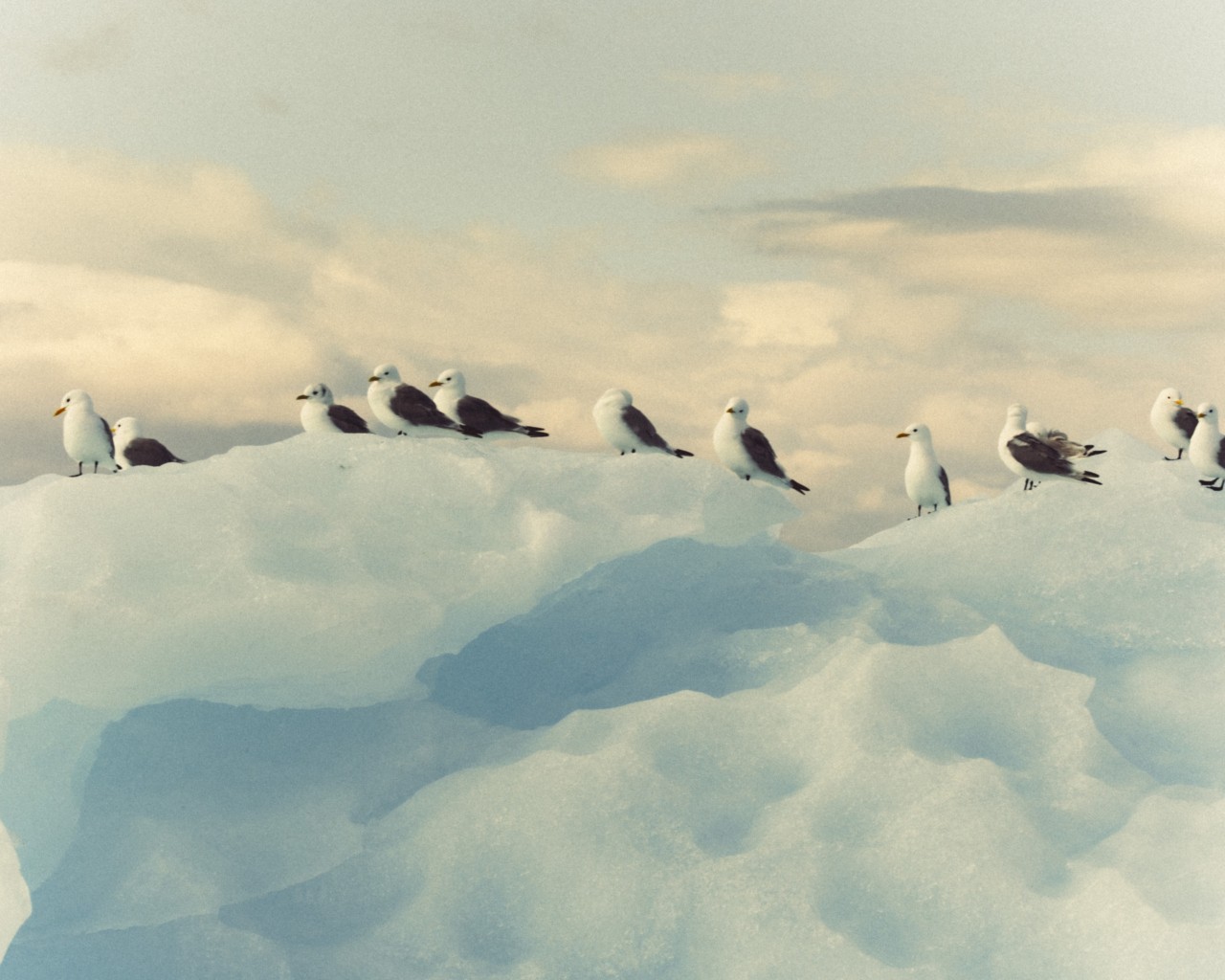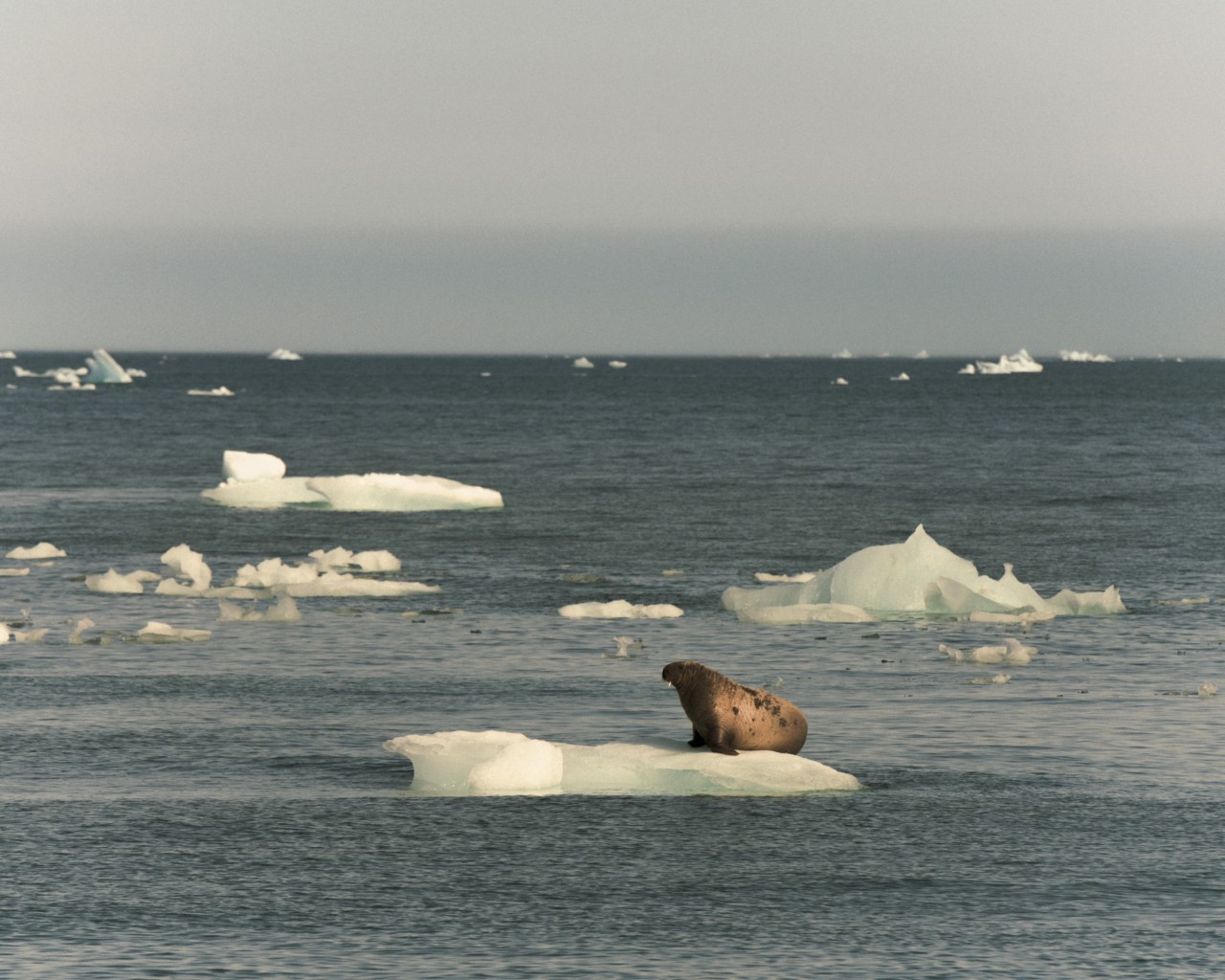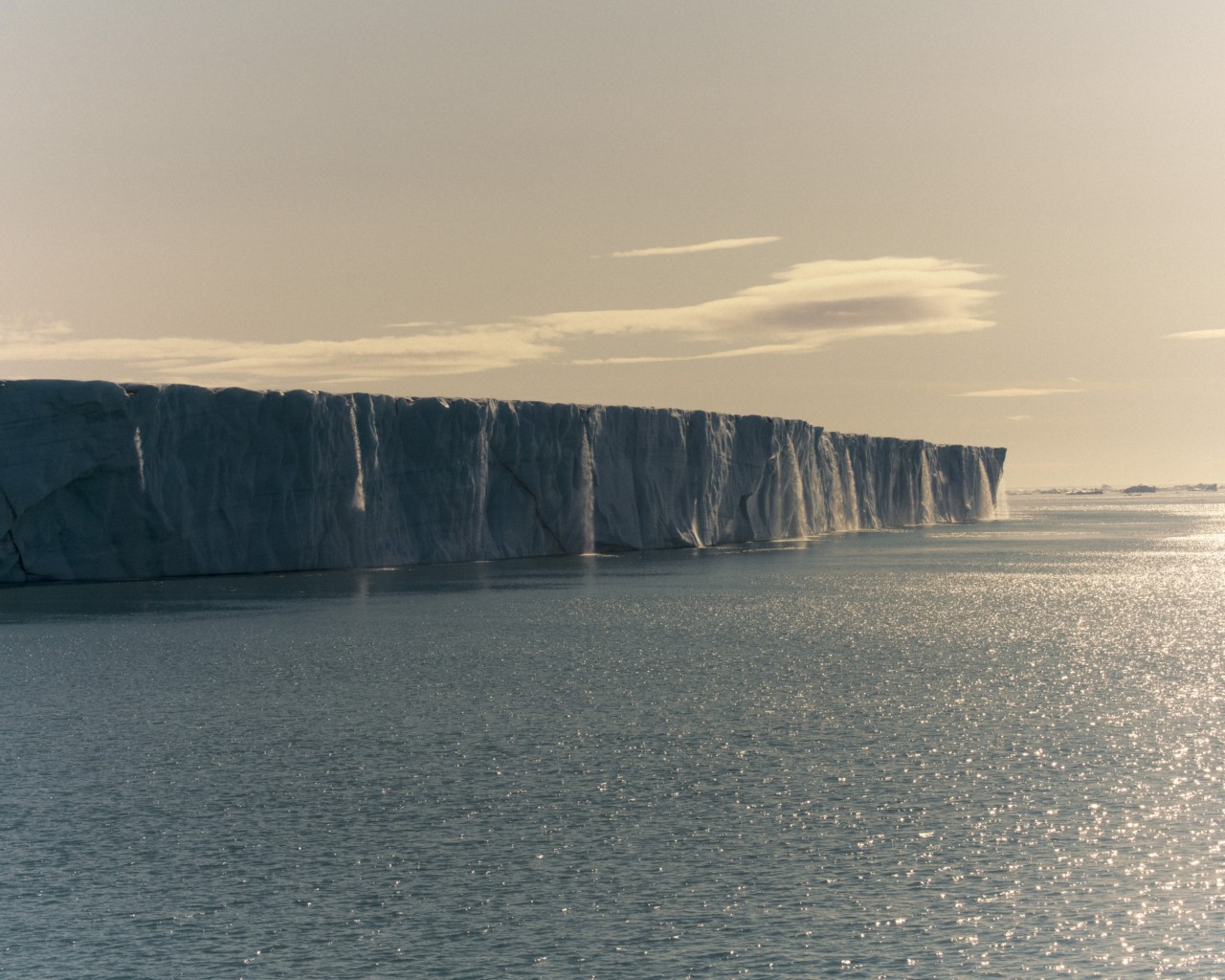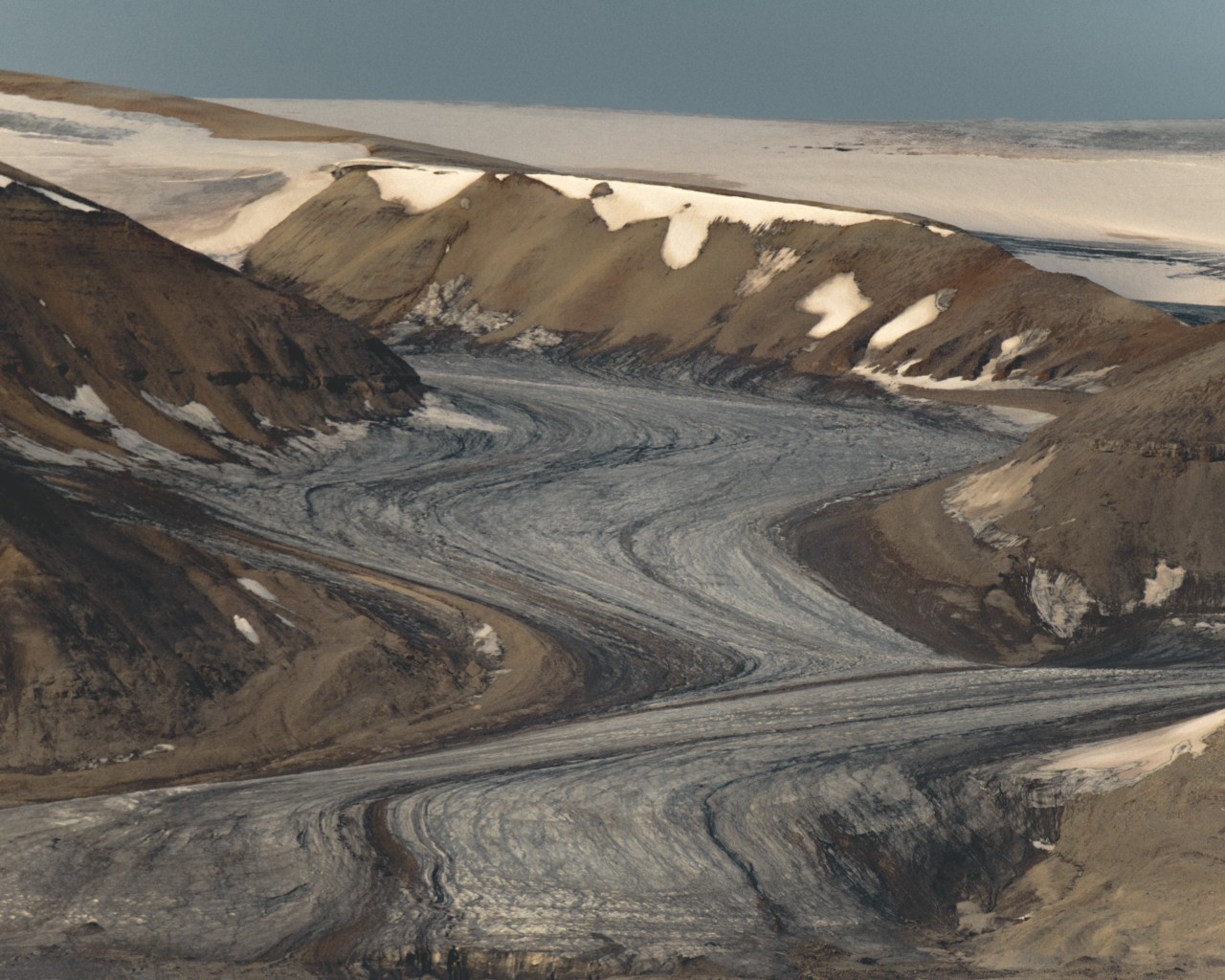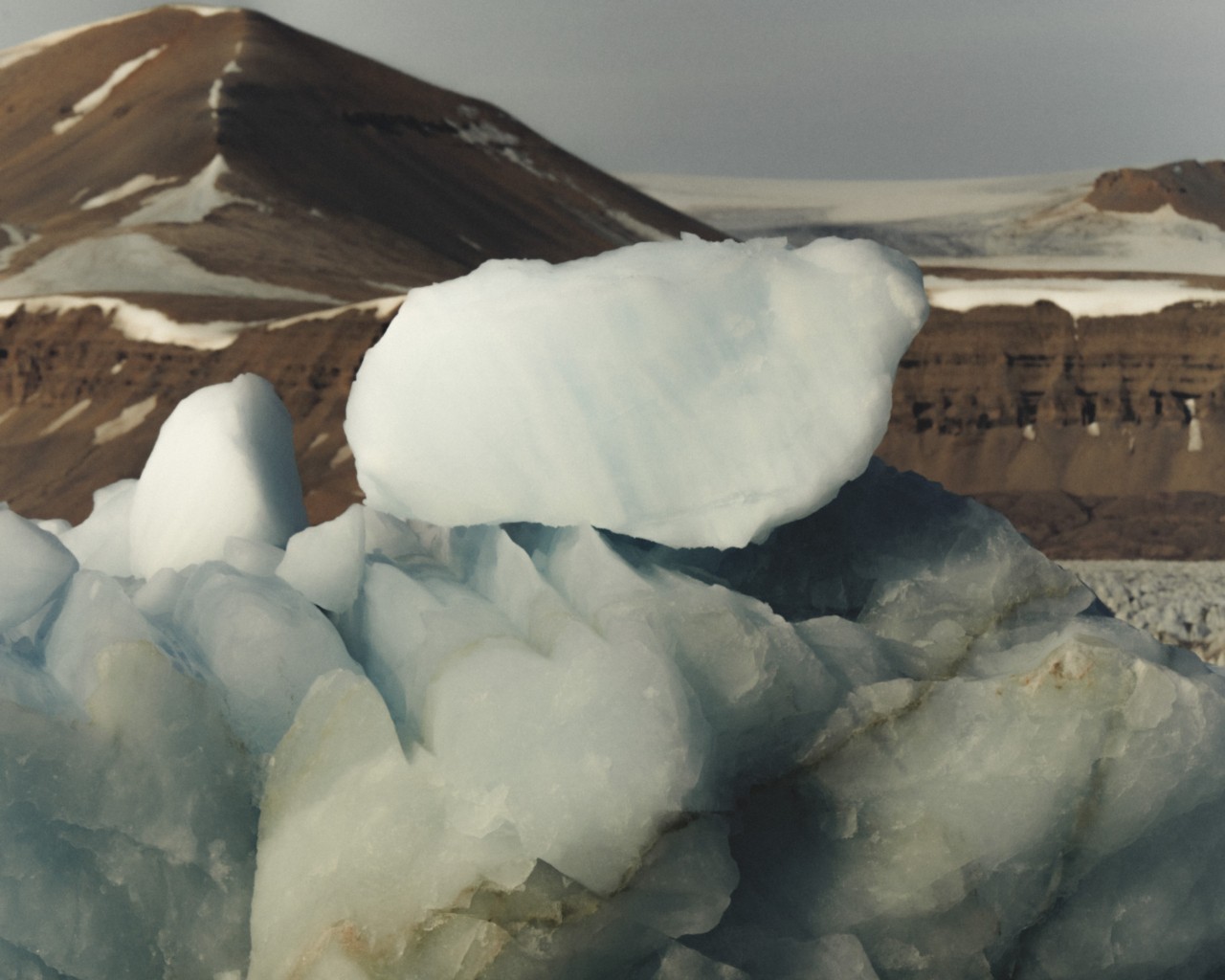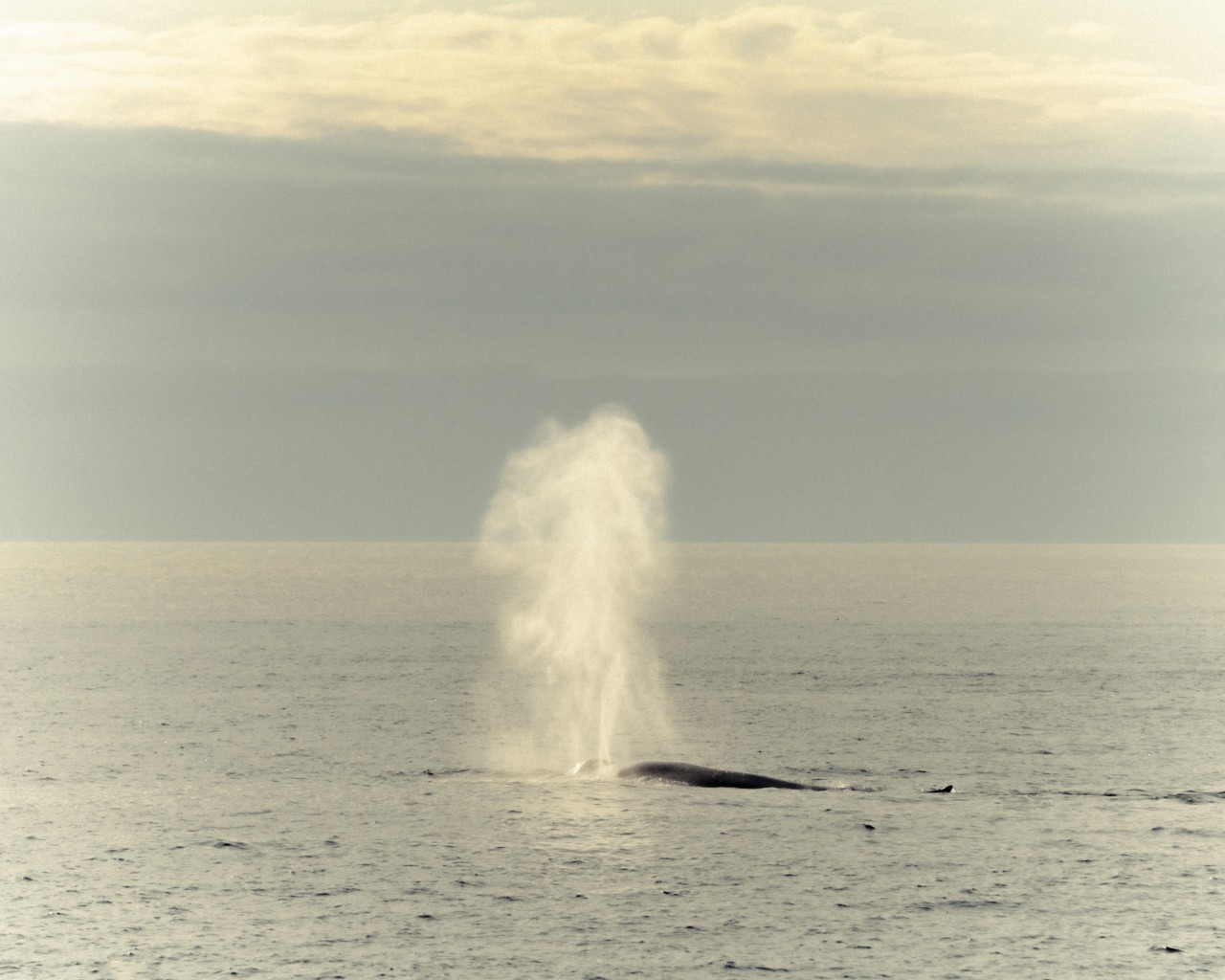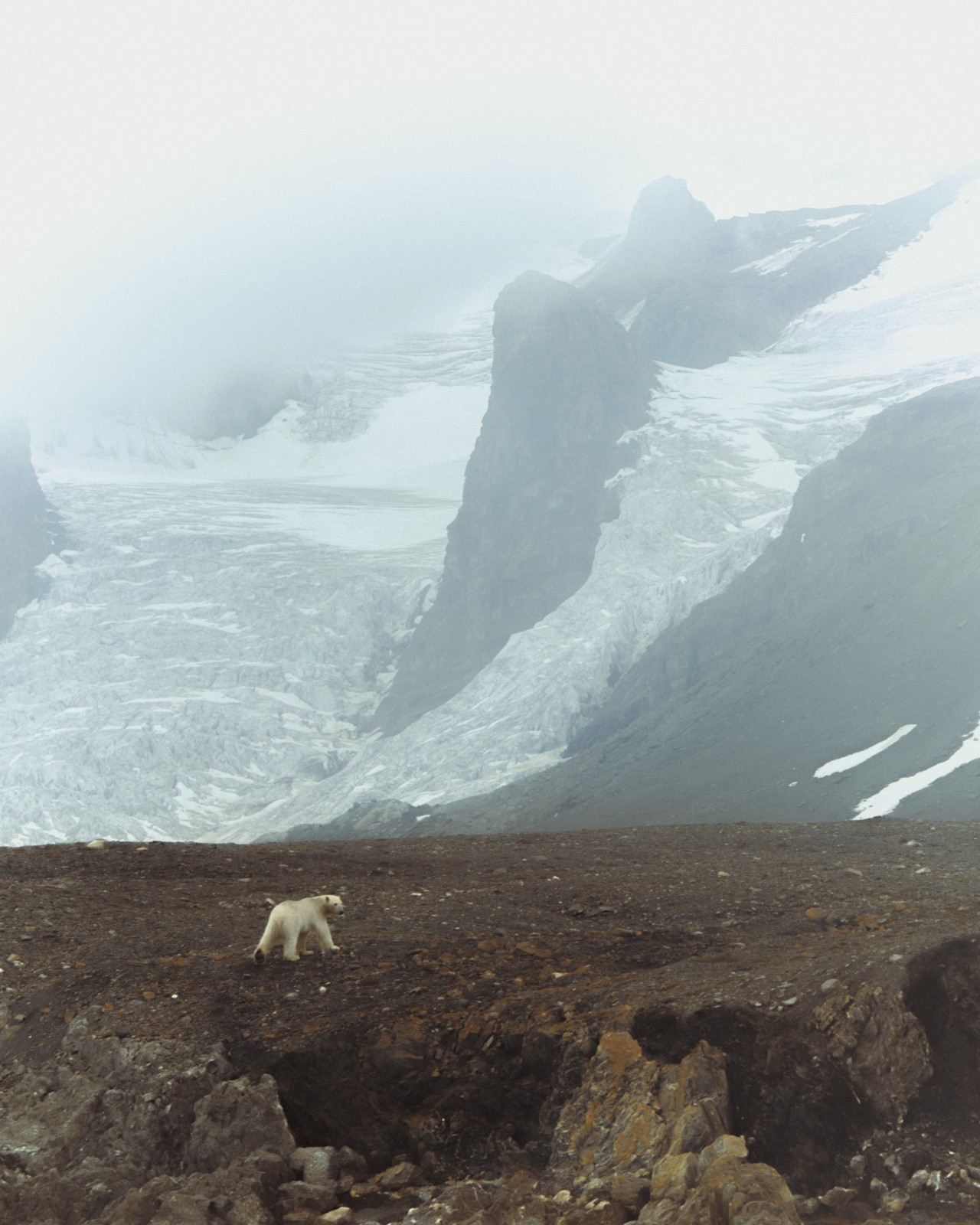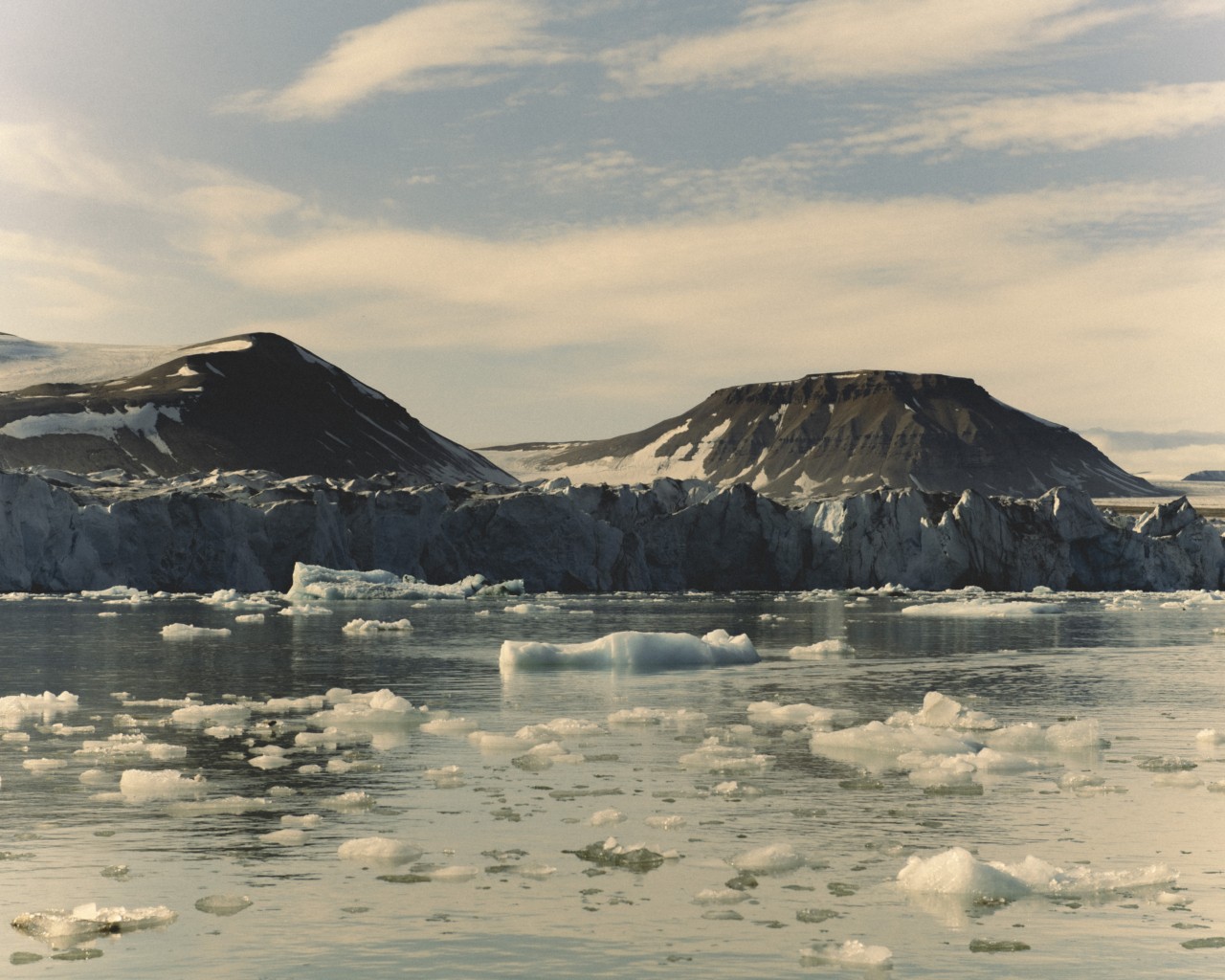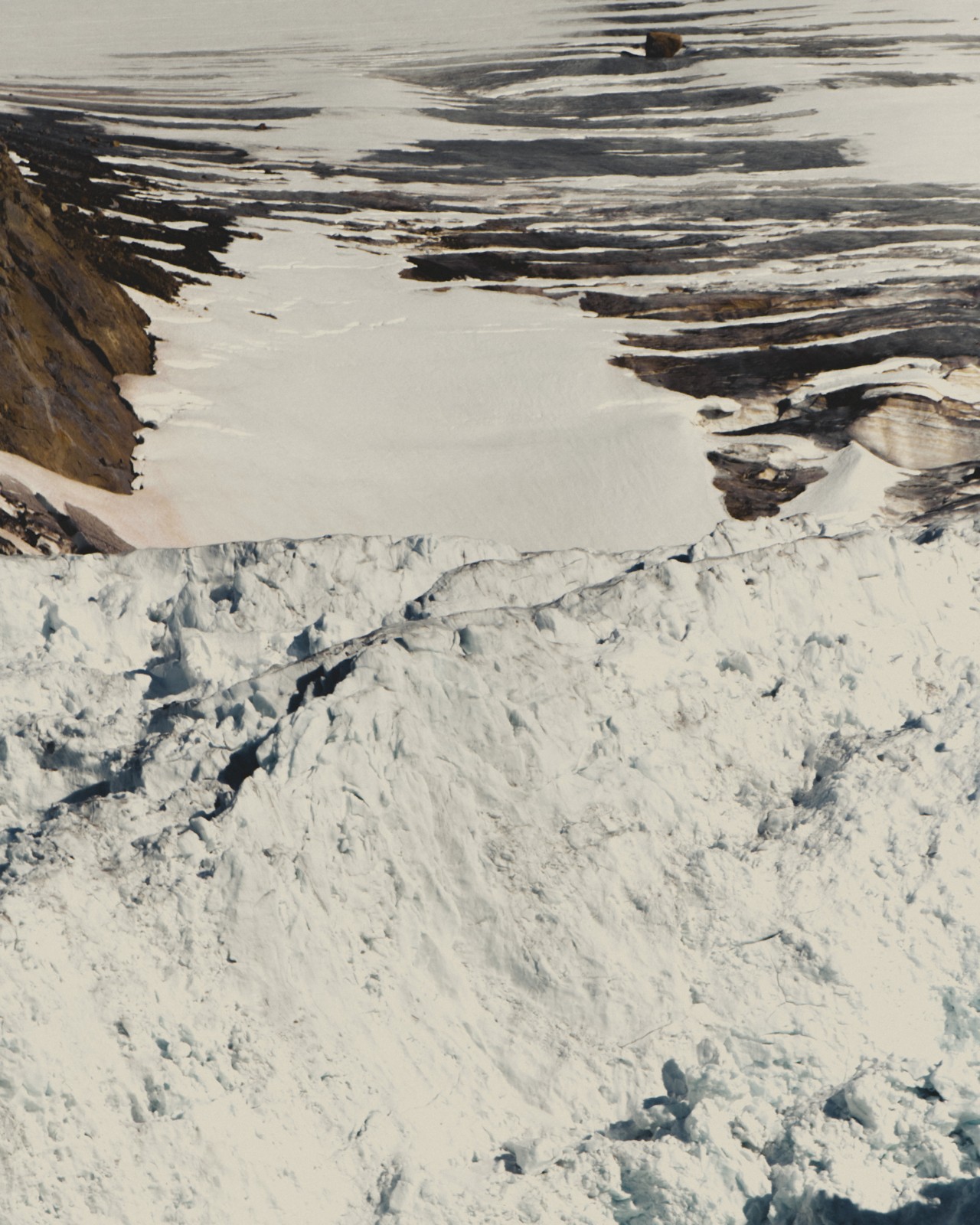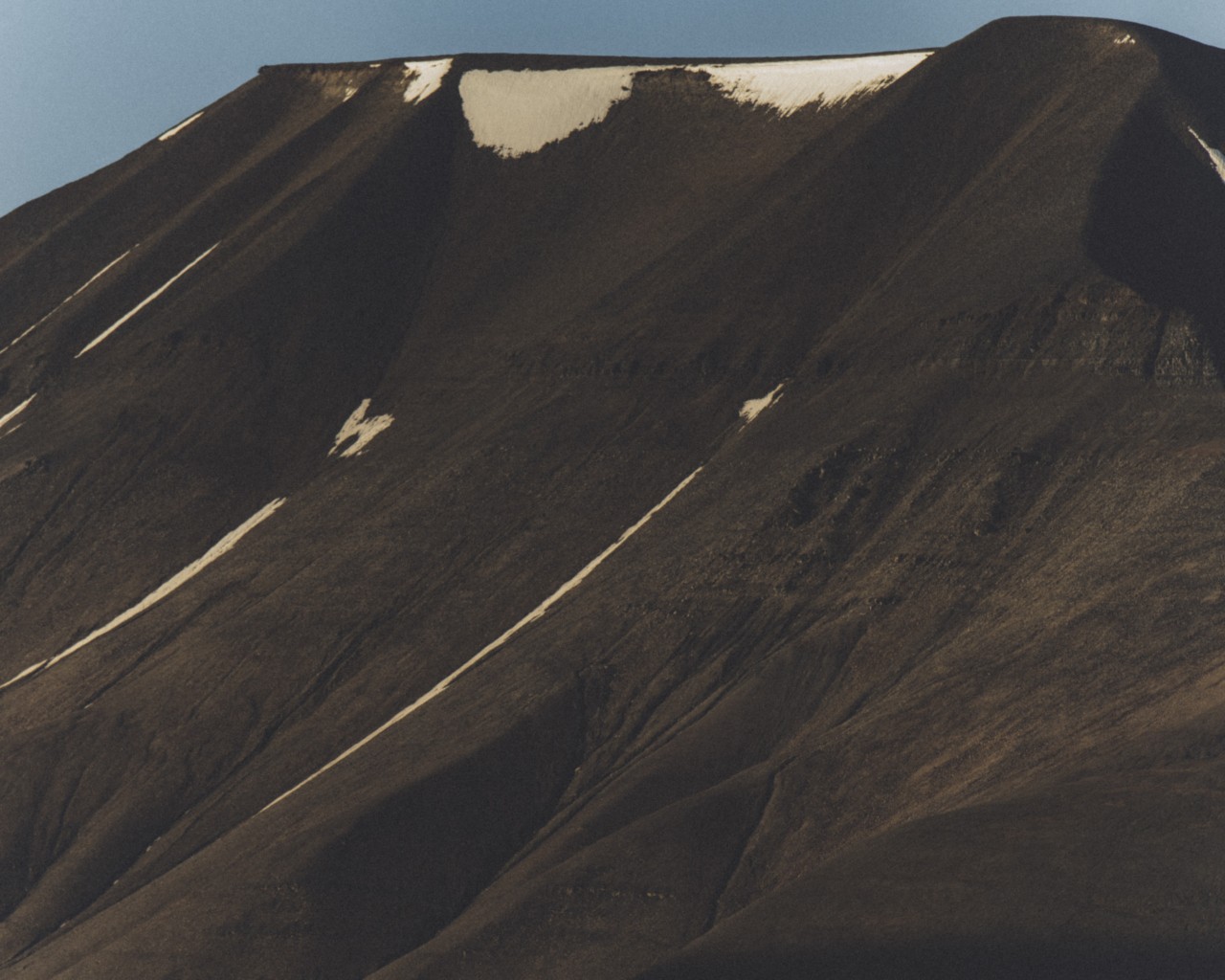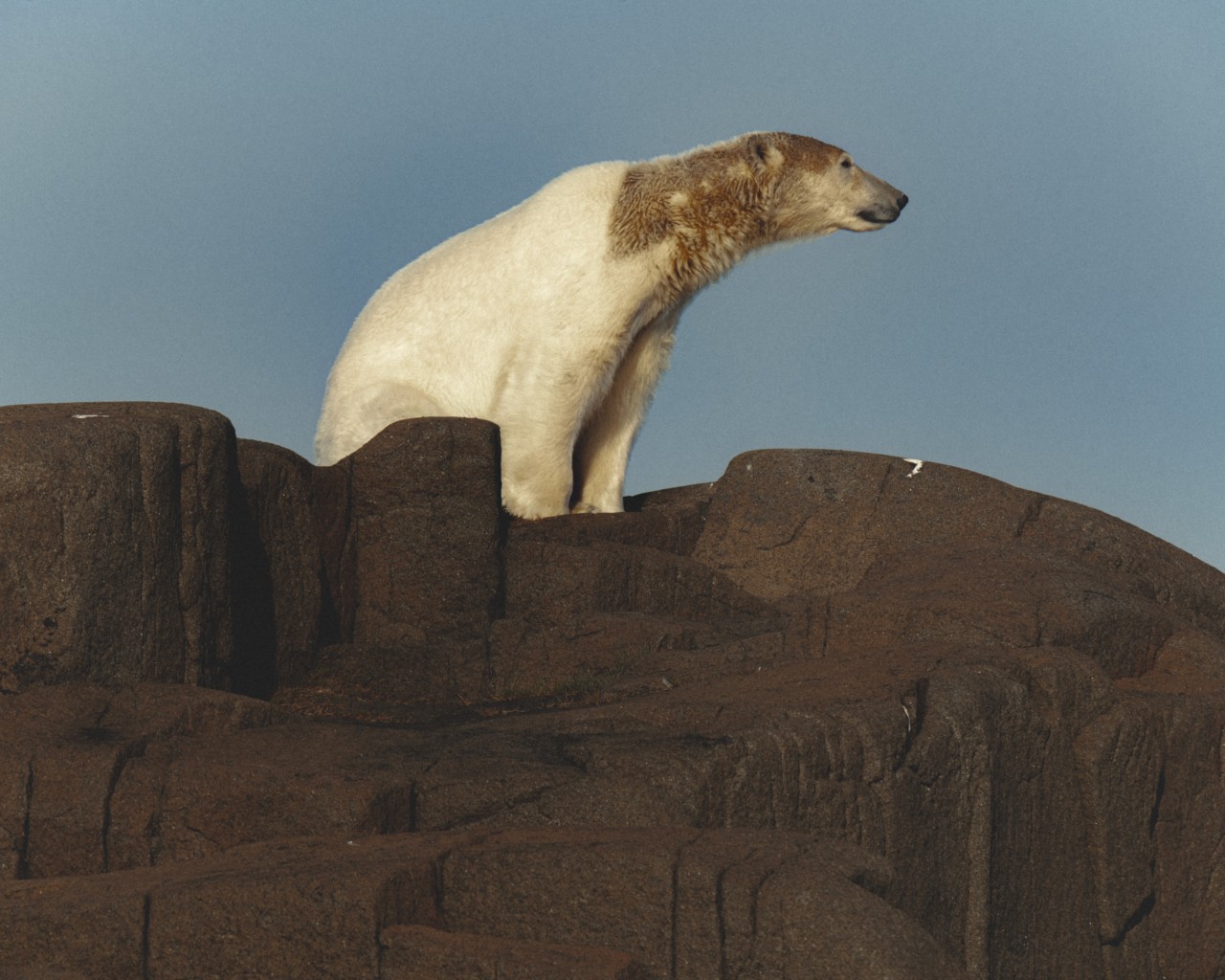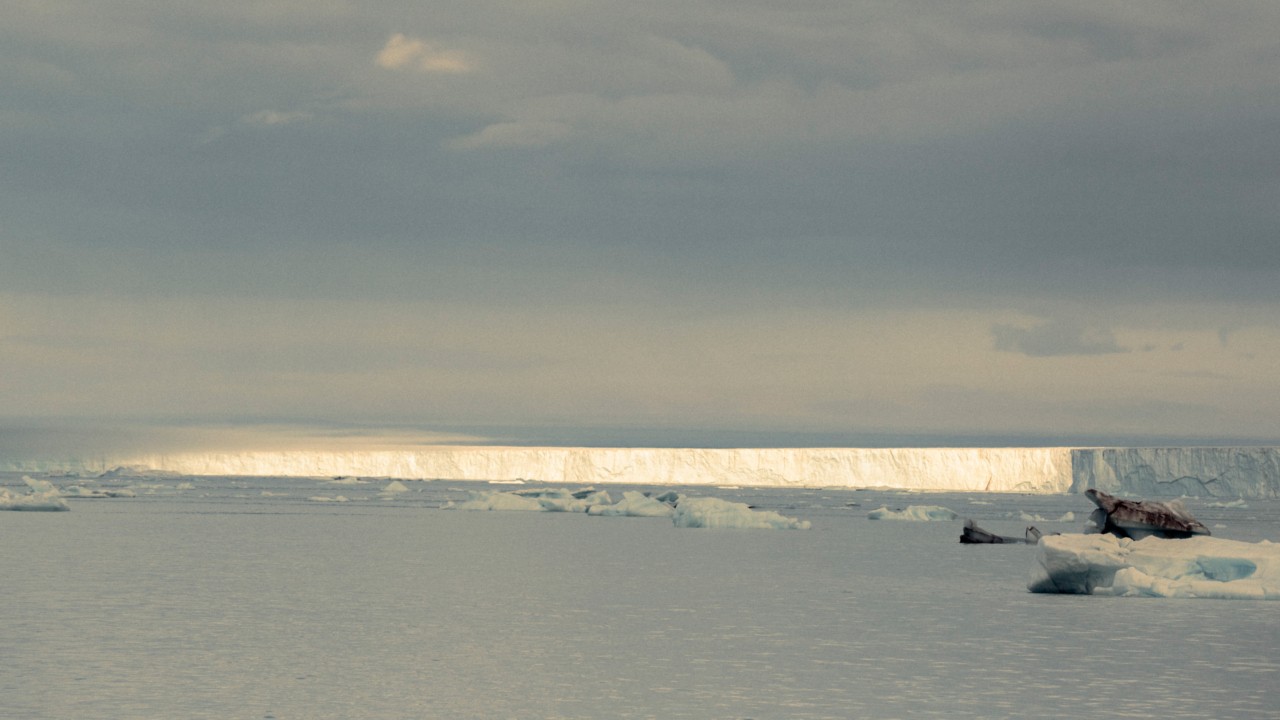
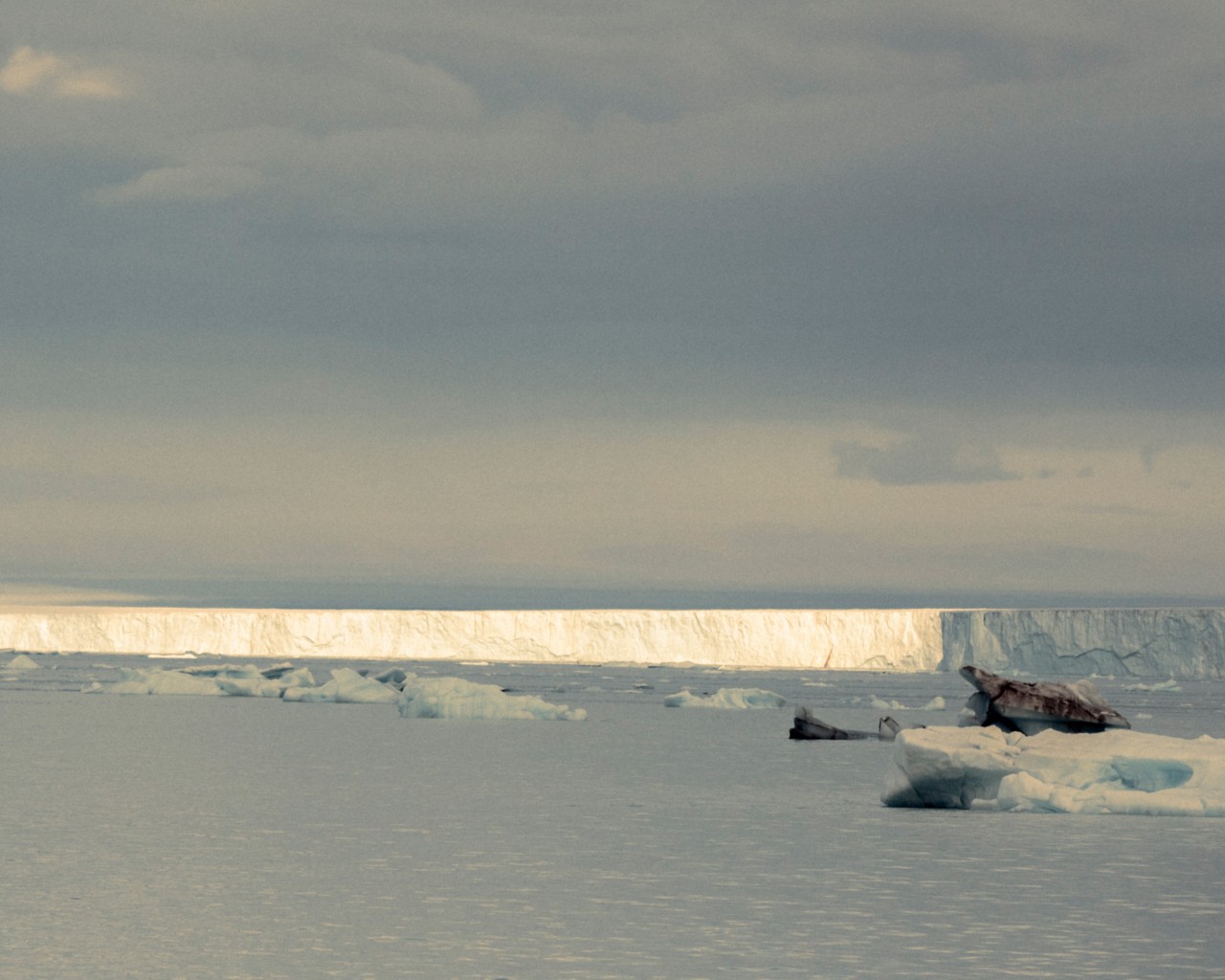
These photos were taken in Svalbard, a Norwegian archipelago in the Arctic Ocean.
Words by Molly Taft
Photographs by Lena C. Emery

About 55 million years ago, something big happened to our planet: The atmosphere suddenly gained a bunch of carbon dioxide.
Scientists think that the event—called the Paleocene-Eocene thermal maximum, or PETM—was kicked off by volcanic eruptions, which released thousands of gigatons of CO2 into the atmosphere. Chaos ensued: The Earth’s climate shot up between 5 to 8 degrees Celsius; oceans experienced mass extinctions due to rapid acidification; and it took the planet nearly 200,000 years to recover.
All of this might sound eerily familiar in the twenty-first century. But there’s a key difference between the PETM and modern-day climate change. During the PETM, that massive influx of CO2 happened over a period of 20,000 years. Humans, meanwhile, have hit the accelerator on atmospheric CO2 in less than 250 years.


But what we’re doing to the planet now is another order of magnitude faster. “This change is so rapid that, from our geological experience, it’s faster than anything that we’ve ever experienced,” said Julie Brigham-Grette, a glacial geologist and a professor at the University of Massachusetts Amherst.
Nowhere is this more evident than the Arctic, which has warmed four times as fast as the rest of the globe over the past 45 years, thanks to humanity’s use of fossil fuels. One recent study predicted that, without drastic cuts to global emissions, summer sea ice could be all but nonexistent by the 2030s—about 10 years earlier than previous models anticipated.
There are echoes of ancient history here: The Arctic has been ice-free before, thousands of years ago. What can the Earth’s past tell us about its future?

The Earth is estimated to be around 4.5 billion years old. In this context, the Arctic as we think of it—frozen tundra, massive glaciers, sea ice all year round—is a modern phenomenon.
“Even two million years ago, the Arctic was very different,” Brigham-Grette said. “It was much warmer than today.”
If you hopped into a time machine that took you back those two million years, you’d probably see what looks more like a lush forest than icy stretches of tundra. Sediment core data pulled from a lake in northeast Siberia suggests that boreal forests—made up of trees that included larch, spruce, fir, and hemlock—blanketed Arctic regions that are now treeless. DNA records found in the far north of Greenland show that mastodons, hare, geese, rodents, and birch trees once thrived in an area that today reaches averages of −20 degrees Fahrenheit in the winter.




It might sound pleasant at first blush. But that era of Earth’s history points toward some worrying conclusions about our future. Fossil records of animals and plants across the rest of the world during this time period suggest that average temperatures were around 14.4 degrees Fahrenheit (8 degrees Celsius) warmer than they are now. Sea levels were higher, too—between 30 to 60 meters (around 98 to 196 feet) above our modern oceans, which would put cities in the U.S. like Miami, Tampa, and New Orleans permanently underwater. Today, the Greenland ice sheet is melting at a fast clip, helping to contribute to 2.5 inches of sea level rise over the past 20 years. If the whole ice sheet melts, sea levels could rise by 24 feet. (Add in Antarctic ice sheets, and sea level rise could skyrocket past 200 feet.)
Higher air temperatures also meant that wildfires were a common occurrence in the ancient Arctic. In the modern world, wildfire rates above the Arctic Circle have skyrocketed in recent years, tearing through fragile ecosystems and endangering people living nearby. These wildfires also release methane and carbon dioxide stored inside permafrost, pushing the rest of the planet to even more dangerous levels of warming.

Another thing in this ancient past that looks eerily similar to the present is the atmosphere. Average global carbon dioxide levels in 2023 sat at more than 419 parts per million (ppm)—the highest level in human history and almost 50% higher than what they were when the Industrial Revolution began in the late eighteenth century. The last time atmospheric CO2 levels were this high was during the Pliocene, about three million years ago, right around when the Arctic was covered in lush forest.
The transition from the tropical Pliocene Arctic to one that looks more familiar didn’t happen overnight. Thanks to a phenomenon known as orbital cycles—how the shape, direction, and axis of the Earth’s orbit regularly change over time, shifting which parts of the planet have more exposure to the sun—the world naturally goes through ice ages and interglacial periods. Thousands of years of higher temperatures and retreating ice sheets are followed by colder periods, where glaciers grow thick across the northern part of the globe.


Through it all, the Arctic has adjusted. Polar bears, which began to evolve from brown bears some 500,000 years ago, have survived slightly warmer climates, then colder ones. People have been living and thriving in the Arctic for thousands of years, too: One mammoth carcass found in 2012 suggests humans hunted animals in the region 45,000 years ago.
The key difference between those shifts and what’s happening today, Brigham-Grette said, is time. “The world has changed, the world goes through cycles—but not on this timescale,” she explained.
The last time the Arctic was ice-free during the summer was around 10,000 years ago, when global CO2 was hovering around 280 ppm. According to the Earth’s past patterns, the peak of the next global ice age should begin in roughly 60,000 to 70,000 years, but our unchecked carbon emissions have thrown a wrench in the works. Atmospheric conditions during Earth’s previous ice age cycles never exceeded 300 ppm. In a worst-case scenario, if the world keeps using fossil fuels totally unchecked, we could hit more than 1,000 ppm by the end of the century.

On February 9, 2019, more than 50 polar bears descended suddenly on the Russian village of Belushya Guba.
Residents cowered inside their homes, afraid to send their children to school, as bears roamed the streets and peeked inside windows. Russian authorities declared a state of emergency. Footage from the incident shows a cluster of bears, their white fur matted with dirt, scavenging around the local garbage dump.
It was the largest reported incident of bears invading a human settlement in the region, but it might not be the last. Sea ice in the Russian Arctic has been declining at an especially fast clip, forcing the bears, who use the ice to hunt, into closer contact with people as they move inland to search for food.



When people hear that the Arctic could soon be ice-free, they tend to assume that the change will be instant and uniform, said Amanda Lynch, a professor of environmental studies at Brown University and a faculty member of the Institute at Brown for Environment and Society. But “it’s not going to happen at the same pace everywhere,” Lynch told me. “It’s not like in 2030, it’s going to suddenly be the Mediterranean.”
But the region will still undergo drastic changes. Even if the world stops using all fossil fuels tomorrow, the amount of damage we’ve done to the atmosphere means that destabilizing changes from warming will continue, especially in the Arctic. “The changes we’re seeing in the loss of the cryosphere will continue to accelerate,” Lynch said. “It keeps moving faster than we expect.”
We’re also starting to see changes in the region that have no precedent in recent geologic history. In a worst-case scenario, ocean acidification could hit levels not seen in 14 million years by the end of the century. This increasing acidification could drastically alter the base of the global marine food chain. Meanwhile, the massive infusion of freshwater from the melting Greenland ice sheet could trigger the collapse of a crucial ocean current that influences weather around the world.

And what about human society? The majority of the Arctic region is technically an ocean, governed by the same delicate network of international treaties that control open waters like the Atlantic and the Pacific. As that ocean becomes increasingly ice-free, the longstanding rules of engagement around business and governance in the region are crumbling.
Sea ice decreasing in Russia has given the superpower carte blanche to move around in formerly inaccessible areas. In the wake of the war in Ukraine, one of Russia’s only remaining customers for its natural gas is China. There’s a dark humor in the fact that Russia is able to juice up its fossil-fuel shipments to China using waters that are newly opened thanks to climate change.
As world powers coalesce on the Arctic, bringing heavy ships, militarization, and new industries like deep-sea mining to the region, the human footprint will be undeniable. Heavy shipping vessels use a thick, viscous fuel that creates black carbon when burned, which covers aquamarine ice in a layer of fine black soot. (The soot makes ice melt even faster by decreasing its reflectivity.) Lynch said that it’s likely that there will be at least one oil spill within the next decade, as fossil-fuel and spill cleanup provisions in international treaties get weaker with the thinning ice.

At the same time, the land is unleashing its own litany of horrors, as naturally-occurring phenomena exacerbate—or are exacerbated by—climate change. A kind of red algae, known as “blood algae,” is speeding the melt of Greenlandic ice, already in danger from rising temperatures. Massive sinkholes are opening up in the ground, releasing huge amounts of methane into the air. Researchers have isolated long-dormant viruses from the permafrost, and some speculate that the melting Arctic could unleash a zombie pandemic upon the world.
No one has more of a front seat to this than Indigenous groups, who are witnessing the land and water they have relied on for centuries change rapidly. In 2022, the Yup’ik village of Newtok became one of the first towns to begin entirely relocating due to climate change, as the rapidly melting permafrost began engulfing homes and buildings.

Most of us can only think in tiny increments: What’s coming next week, next month, next year. Even historians dealing with civilizations hundreds or thousands of years ago only conceive of time as a function of human existence—a tiny, insignificant blip in Earth’s larger timeline.
It takes an incredible amount of work to build a reconstructive model of where the Earth has been, and there’s still much we don’t know about how the Earth naturally behaves or what we can predict for the future. All of that careful work—years and years of math equations and lab tests and gathering samples and testing out theories—can only give us an idea of what could be coming next.
In the Arctic in 2019, residents of Belushya Guba were eventually able to scare the invading bears away. Local media reported that sea ice began to thicken and the bears returned to their normal hunting grounds. Across the Barents Sea, meanwhile, polar bears on the island of Svalbard are hunting reindeer and eating birds’ eggs to survive as seals, their favored prey, disappear. Like their ancient ancestors, they are finding ways to adapt—for now. Whether they have time to continue doing so in the future is up to us.


Photography Assistant Chris Leigh-Cattrall Special Thanks Natural World Safaris
This story first appeared in Atmos Volume 10: Afterlife with the title, “Thawing Out.”
Correction,
December 20, 2024 12:40 pm
ET
This story has been updated to clarify the title of Amanda Lynch. She is a faculty member of the Institute at Brown for Environment and Society, not the director.
Beholding the Arctic’s Wonders—And Its Melting Future
